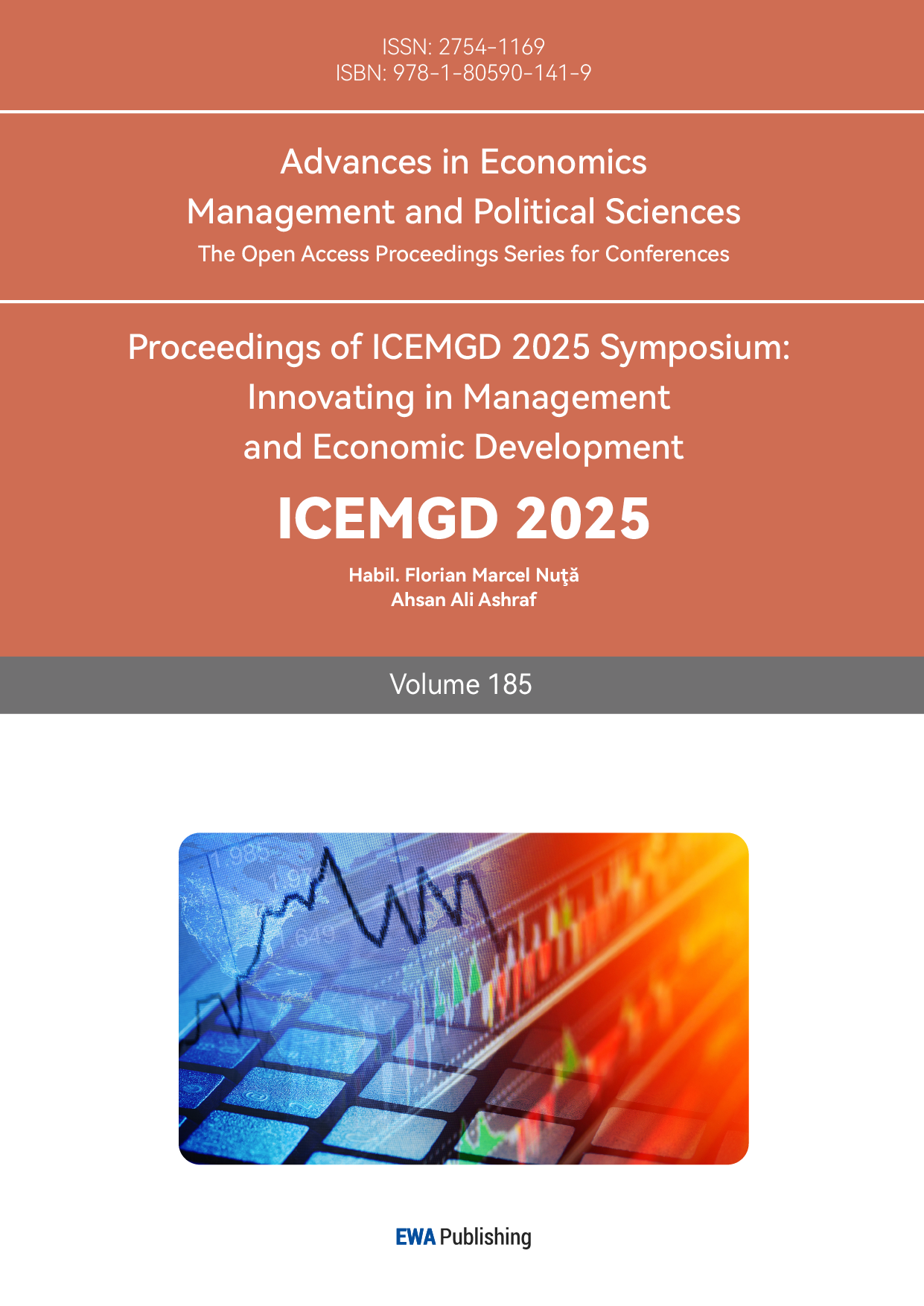References
[1]. Xu, X., & Xia, Y. (2021). Research on customer churn prediction model based on probability calibration. Statistics and Applications, 10(4), 634–641.
[2]. Sahin, E. K. (2020). Assessing the predictive capability of ensemble tree methods for landslide susceptibility mapping using XGBoost, gradient boosting machine, and random forest. SN Applied Sciences, 2(7), 1308.
[3]. Odegua, R. (2019, March). An empirical study of ensemble techniques (bagging, boosting and stacking). In Proc. conf.: deep learn. indabaXAt.
[4]. Amin, A., Anwar, S., Adnan, A., Nawaz, M., Howard, N., Qadir, J., ... & Hussain, A. (2016). Comparing oversampling techniques to handle the class imbalance problem: A customer churn prediction case study. Ieee Access, 4, 7940-7957.
[5]. Wang, Z. H. E., Wu, C., Zheng, K., Niu, X., & Wang, X. (2019). SMOTETomek-based resampling for personality recognition. IEEE access, 7, 129678-129689.
[6]. Nguyen, C., Wang, Y., & Nguyen, H. N. (2013). Random forest classifier combined with feature selection for breast cancer diagnosis and prognostic.
[7]. Aliyev, A., & Hasanova, R. (2024). Improving churn prediction in the banking sector using stacked generalization. Communications in Applied Information Technology, 12(1), 1–12.
[8]. Li, S., & Shen, Z. (2024). Explainable customer churn prediction model based on deep learning. In Proceedings of the 3rd Asia Conference on Algorithms, Computing and Machine Learning (CACML 2024) (pp. 282–287). Association for Computing Machinery.
Cite this article
Li,R. (2025). Bank Customer Churn Prediction Based on Stacking Model. Advances in Economics, Management and Political Sciences,185,42-51.
Data availability
The datasets used and/or analyzed during the current study will be available from the authors upon reasonable request.
Disclaimer/Publisher's Note
The statements, opinions and data contained in all publications are solely those of the individual author(s) and contributor(s) and not of EWA Publishing and/or the editor(s). EWA Publishing and/or the editor(s) disclaim responsibility for any injury to people or property resulting from any ideas, methods, instructions or products referred to in the content.
About volume
Volume title: Proceedings of ICEMGD 2025 Symposium: Innovating in Management and Economic Development
© 2024 by the author(s). Licensee EWA Publishing, Oxford, UK. This article is an open access article distributed under the terms and
conditions of the Creative Commons Attribution (CC BY) license. Authors who
publish this series agree to the following terms:
1. Authors retain copyright and grant the series right of first publication with the work simultaneously licensed under a Creative Commons
Attribution License that allows others to share the work with an acknowledgment of the work's authorship and initial publication in this
series.
2. Authors are able to enter into separate, additional contractual arrangements for the non-exclusive distribution of the series's published
version of the work (e.g., post it to an institutional repository or publish it in a book), with an acknowledgment of its initial
publication in this series.
3. Authors are permitted and encouraged to post their work online (e.g., in institutional repositories or on their website) prior to and
during the submission process, as it can lead to productive exchanges, as well as earlier and greater citation of published work (See
Open access policy for details).
References
[1]. Xu, X., & Xia, Y. (2021). Research on customer churn prediction model based on probability calibration. Statistics and Applications, 10(4), 634–641.
[2]. Sahin, E. K. (2020). Assessing the predictive capability of ensemble tree methods for landslide susceptibility mapping using XGBoost, gradient boosting machine, and random forest. SN Applied Sciences, 2(7), 1308.
[3]. Odegua, R. (2019, March). An empirical study of ensemble techniques (bagging, boosting and stacking). In Proc. conf.: deep learn. indabaXAt.
[4]. Amin, A., Anwar, S., Adnan, A., Nawaz, M., Howard, N., Qadir, J., ... & Hussain, A. (2016). Comparing oversampling techniques to handle the class imbalance problem: A customer churn prediction case study. Ieee Access, 4, 7940-7957.
[5]. Wang, Z. H. E., Wu, C., Zheng, K., Niu, X., & Wang, X. (2019). SMOTETomek-based resampling for personality recognition. IEEE access, 7, 129678-129689.
[6]. Nguyen, C., Wang, Y., & Nguyen, H. N. (2013). Random forest classifier combined with feature selection for breast cancer diagnosis and prognostic.
[7]. Aliyev, A., & Hasanova, R. (2024). Improving churn prediction in the banking sector using stacked generalization. Communications in Applied Information Technology, 12(1), 1–12.
[8]. Li, S., & Shen, Z. (2024). Explainable customer churn prediction model based on deep learning. In Proceedings of the 3rd Asia Conference on Algorithms, Computing and Machine Learning (CACML 2024) (pp. 282–287). Association for Computing Machinery.









